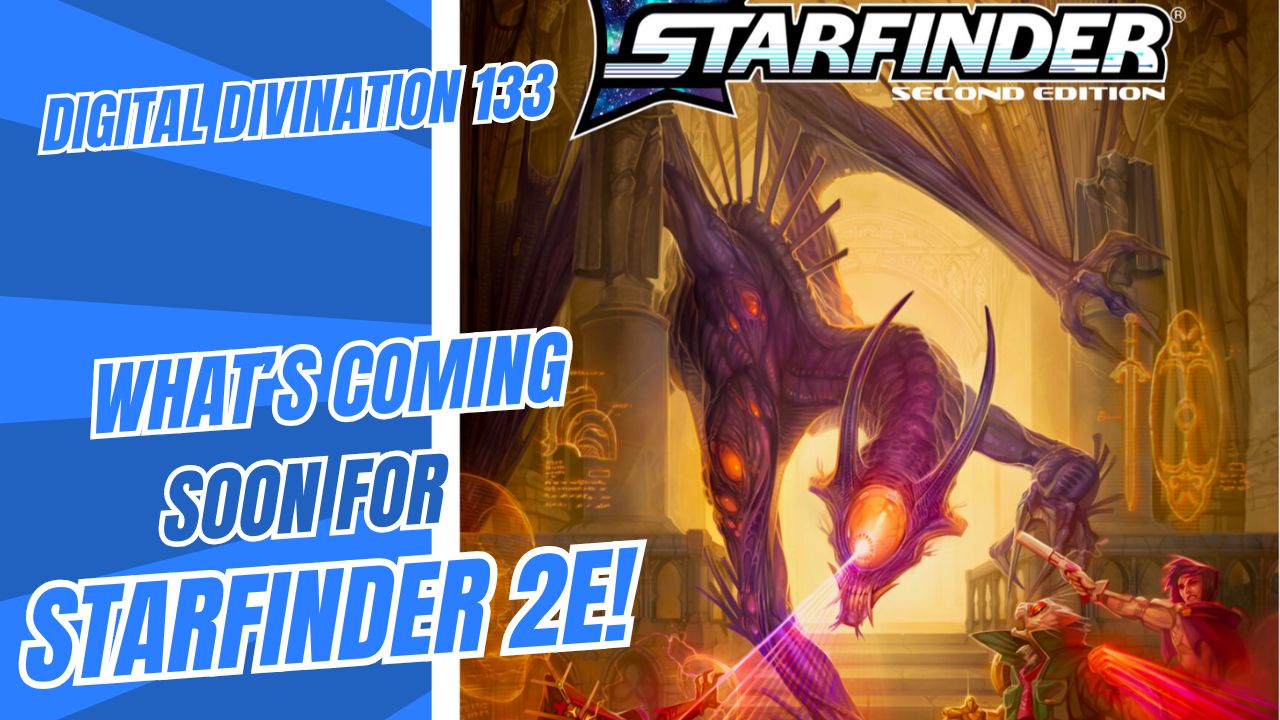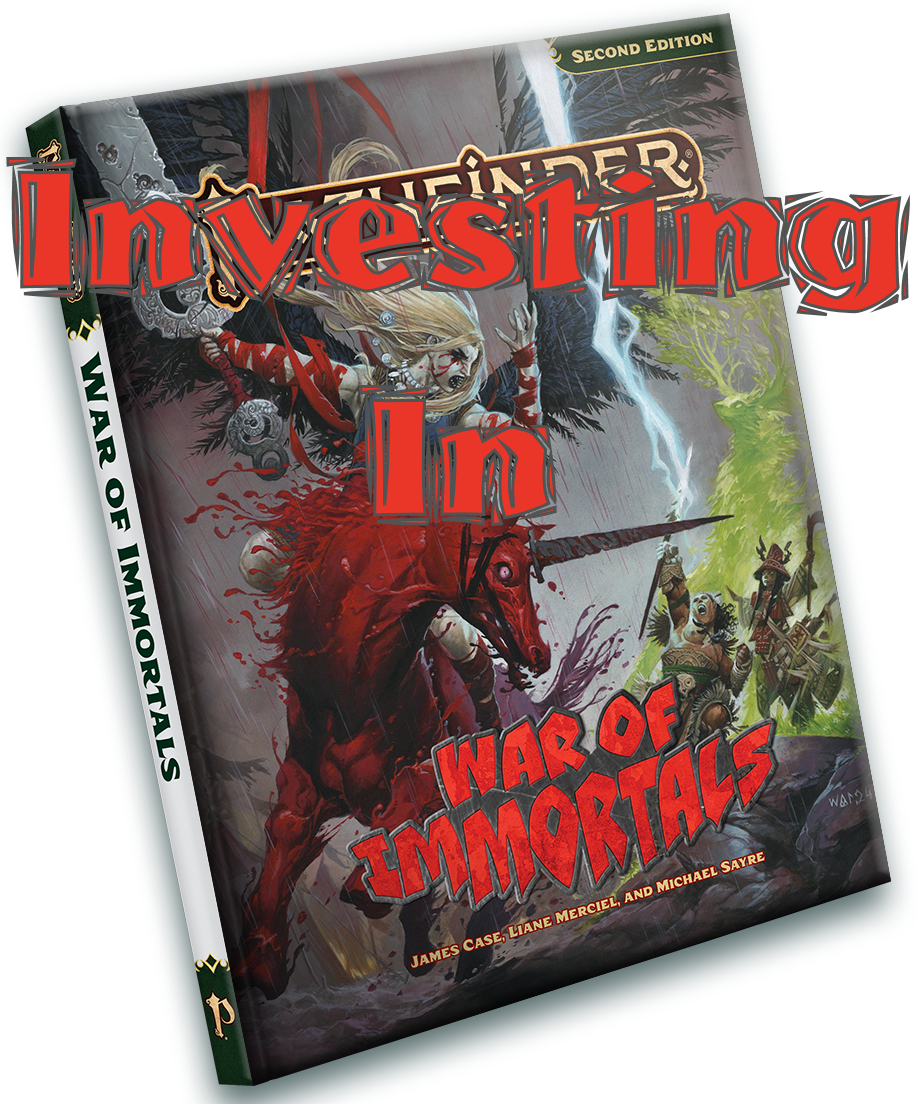If this side reviews Dungeons and Dragons role-playing content, what’s the Miniatures Handbook doing here? Many people don’t realize that a third of the Miniatures Handbook is RPG material that has nothing more to do with the D&D Minis game than any other sourcebook. The big question on the casual gamers mind is “Can one third of a sourcebook be worth $30?”
At a Glance
The Miniatures Handbook has a unique cover design, appropriate given that there is no other book like it. A battle scene between Regdar and a couple of fiends dominates the cover, taking up much more space than the artwork from the Complete series and even the Races Of series. It’s bordered in red with rusty metal spikes, and the D&D logo is held in place by vice locks. Strange, by eye-catching, although I would have preferred artwork that more closely relates to a game of D&D Minis, pitting two mixed bag warbands united only by alignment against one another.
The theme of uniqueness continues inside. Many pages feature concept sketches for D&D Minis, often with the corresponding miniature featured as well. Cool idea, but with a few flaws. Some pages are image heavy. The sketches rarely tie into the content of the page, which catches those that have read sourcebooks extensively off guard. And frankly, there are instances, like the Human Wanderer on page 25, where the artwork far outshines the miniature based on it.
The book does feature original illustrations, and including one of my favourites in any D&D sourcebook, the Healer. Visually speaking, the Miniatures Handbook is one of the most packed books this side of the Monster Manuals. At least the third dedicated to the role-playing game is.
Highlights
New Classes
Favoured Souls are to clerics as sorcerers are to wizards. The Healer class takes all the combat away from the cleric and replaces it with a divine class that is completed dedicated to the well-being of others. The Marshal is a battlefield leader, a warrior that bolsters his allies through force of personality. And finally the Warmage, the ultimate integration of combatant and caster. These four classes fill niches previously left open.
Granted, The Healer and Warmage work much better mechanically than the Favoured Soul (which is a touch too powerful and overall pourly conceived) and the Marshal (which is a touch underpowerful), all three classes have a good idea behind them.
Vanilla Options
In many ways, the Miniatures Handbook is like a follow-up to the core rule books. The new classes, feats, and spells compliment the content of the Player’s Handbook. The prestige classes and magic items could fit right into the Dungeon Master’s Guide. And the monsters chapter includes beats that deserve more exposure than they’ve received. The best part about everything in the role-playing section of this book is that it doesn’t feel forced. It feels like Wizards of the Coast staff started coming up with new classes and new rules that they needed a place for.
Aspects of the Gods
There are eleven new monsters introduced in the Miniatures Handbook that are beyond inspired. Whoever came up with Aspects needs a firm handshake, a sushi dinner, and keys to the presidential washroom. Let’s pretend that Dungeons and Dragons deities are fast food restaurant mascots. The gods themselves are the clowns, kinds, and pig tailed girls that appear in the commercials. Aspects are the copies of those mascots that appear at birthday parties.
The reason I’m so impressed by the idea of Aspects is that it takes a big chunk of previously established material and makes it accessible in new ways without watering the concept down. Gods play a major role in D&D 3.5, but only the highest level Epic characters could stand a chance against one in combat. Previously, the closest most players ever came to these powerful beings was one of their high level clerics. Now, a DM can challenge his players with a manifestation of the power of a god at 10th level.
Low Points
What Is It?
Does it even make sense that RPG material is in the Miniatures Handbook? If it was strictly tips for using miniatures in your role-playing sessions, that would make sense. But this book features content that is unrelated to miniatures or even the rest of its RPG content. It truly is a bunch of options that are just there.
Redistributed Material
It’s hard to fault the Miniatures Handbook for this, but it’s a fact. Much of the RPG content in this sourcebook has found its way into later releases. The Favoured Soul was reprinted in Complete Divine. The Warmage in Complete Mage. Many of the new Feats have made their way into the Complete series. The Catfolk are reprinted in Races of the Wild, Stonechildren in Races of Stone. The entire magic chapter is in the Spell Compendium and Magic Item Compendium. If you already own many of these supplements, then the Miniatures Handbook has even less to offer you.
Less Bang for your Buck
There are no other books on the market that provide so little (in page count) for $30. If you don’t play D&D Minis, you can rip out more than half of this book.
Juicy Bits
The prestige classes are few but fun. The Warchief is an example of a self-explanatory prestige class, and adds flair to a wilderness encounter. Before the leader of a tribe would just have a few more levels than his cronies, and maybe a magic item. Now the head of the pact can act like it, providing bonuses to his underlings.
Close Wounds is a cure spell that can be cast at range as an immediate action. A cleric or healer can use it to cure two party members in one turn without moving. It only heals 2d4 damage, not much for a 3rd level spell, but enough to keep a dying PC alive.
Personal Experience
A player in my group plays a Healer. She liked it for the first few levels, but by 4th level she couldn’t wait for 8th level when she gains a Unicorn companion.
Overall
The Miniatures Handbook makes the most out of very little. If Wizards of the Coast put out a seventy page annual compilation of whatever cool ideas didn’t fit the other sourcebooks that year, and the content was along the same lines of the RPG section of the Miniatures Handbook, I would look forward to it every year. As it is, I want to recommend this book, but it’s hard to justify $30 for a third of a book, especially when a portion of that third is now available elsewhere.
So I have to qualify it. If you’re into both the Dungeons and Dragons RPG and D&D Minis, buy this book. If you’ve considered playing D&D Minis but mostly you like the RPG, you might benefit from this book. And if you can find the Miniatures Handbook used for $20, definitely pick it up. Otherwise, hopefully you have a friend who owns the book because it’s a shame that so few people have ever flipped through the Miniatures Handbook.
If You Liked This Book…
Check out the Complete series. A lot of the content of the Miniatures Handbook was reprinted in there, along with brand new classes, prestige classes, feats, and spells.




Leave a Reply